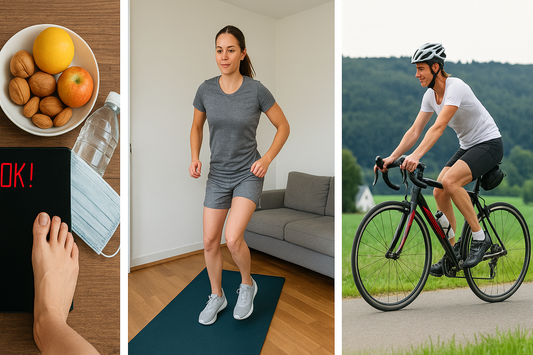
How long should I train per week?
Share
Physical activity is one of the great allies of good health and longevity. According to the World Health Organization (WHO), up to 5 million deaths could be avoided every year if the world population was less sedentary.
Therefore, at the end of 2020, the WHO launched new guidelines for practicing physical activities. Now, the recommendation has doubled: previously, the organization advised 150 minutes of light and moderate activities per week, and 75 minutes in the case of intense activities. Now, there are 300 and 150 minutes of exercise per week, respectively.
The recommendation applies to all adults, including those living with chronic illnesses or disabilities. For children and adolescents, the recommended average is 60 minutes per day.
WHY DID THE WHO DOUBLE ITS PHYSICAL ACTIVITY RECOMMENDATION?
According to WHO statistics, one in four adults does not practice enough physical activity. A sedentary lifestyle and obesity are two public health problems responsible for countless illnesses and deaths worldwide. The situation worsened during the COVID-19 pandemic, with the need to keep the population confined as a form of prevention.
Regular physical activity is essential to prevent and control numerous diseases, such as type 2 diabetes, various types of cancer and heart problems. Furthermore, it has the potential to reduce cognitive decline in the elderly and improve memory. Finally, it improves mood, combating depression and anxiety.
In a statement, the director-general of the WHO, Tedros Adhanom Ghebreyesus, said that being active is fundamental to living longer and living with a better quality of life and health. “Every move counts, especially now as we manage the restrictions of the COVID-19 pandemic. We must all move every day – safely and creatively,” he said.
HOW TO STAY ACTIVE?
Exercise and physical activity are often used interchangeably, but they are not. While the first has planning and rules, the second is any human activity that uses the body's energy. So, running on the treadmill is exercise, but running to catch the bus is a physical activity.
Any activity that helps keep the body active is welcome, such as walking or cycling to work, dancing, gardening or cleaning the house. The more active you are, the better! However, it is also important to exercise, setting aside time in your schedule to practice sports, weight training or aerobic activities.
The WHO recommends that older people, over 65 years of age, prioritize activities that focus on balance and coordination, such as tai chi chuan and yoga, as well as muscle strengthening, to help prevent falls and improve health. Bodybuilding, swimming and functional training are good options.
Regardless of your health conditions, staying active is essential to living longer and better. It is important to consult a doctor or physical trainer for advice on which exercises to do and how often.
See also some golden tips to stop being sedentary:
- Go up and down stairs instead of taking the elevator
- Invite friends and family to go walking. If you are not motivated to walk alone, seek company for a chat during the walk.
- Listen to music to motivate yourself while walking or doing activities at home.
- At the office or at home, walk to your colleagues or relatives instead of sending an email or text.
- While waiting for a bus, plane, or doctor's appointment, take a few steps instead of sitting.
- Park far from your final destination. In the shopping mall parking lot, for example, choose a space further away from the entrance door.
- If you're working from home and need to talk on the phone or have an online meeting, walk instead of sitting whenever possible.
REFERENCES:
World Health Organization. WHO launches new guidelines on physical activity and sedentary behavior. Available at: h ttps://www.paho.org/pt/noticias/26-11-2020-oms-lanca-novas-diretrizes-sobre-atividade-fisica-e-comportamento-sedentario
World Health Organization. WHO Guidelines on Physical Activity and Sedentary Behavior. Available in:
https://apps.who.int/iris/bitstream/handle/10665/336656/9789240015128-eng.pdf


